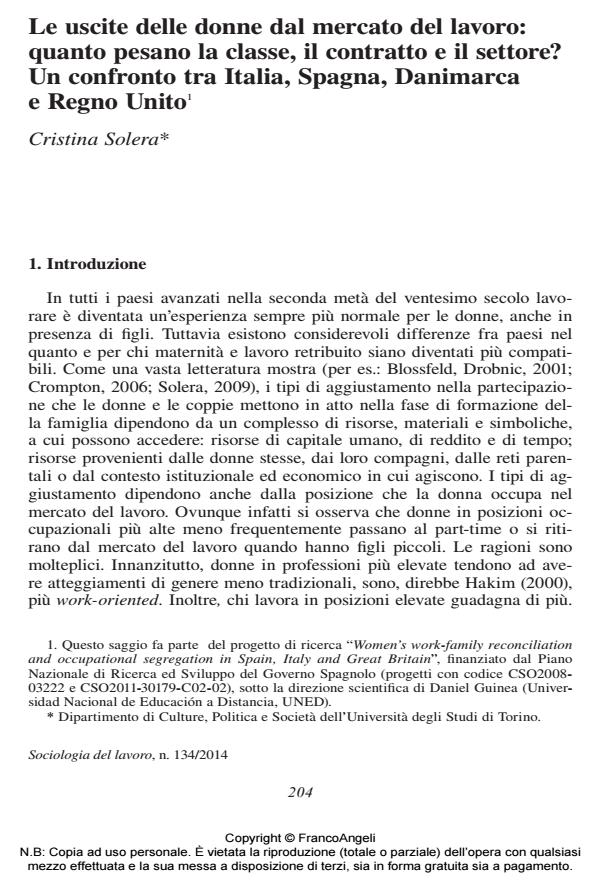Women’s labour market interruptions: do class, contract and sector matter? A comparison of Italy, Spain, Denmark and the UK
Journal title SOCIOLOGIA DEL LAVORO
Author/s Cristina Solera
Publishing Year 2014 Issue 2014/134
Language Italian Pages 21 P. 204-224 File size 153 KB
DOI 10.3280/SL2014-134013
DOI is like a bar code for intellectual property: to have more infomation
click here
Below, you can see the article first page
If you want to buy this article in PDF format, you can do it, following the instructions to buy download credits

FrancoAngeli is member of Publishers International Linking Association, Inc (PILA), a not-for-profit association which run the CrossRef service enabling links to and from online scholarly content.
By drawing on the European Community Household Panel (ECHP), the paper we analyses how the class, the contract and the sector influence women’s exits from the labour market in four countries with different labour markets, welfare policies and normative models: Italy, Spain, Denmark and the United Kingdom. The empirical results confirm that the dividing lines of the female workforce vary between countries. In Italy the most important line is given by the sector, whether public or private. Also in Spain the sector is important, but so are the class and type of contract. In Denmark, where policies and culture support the involvement of women with children into paid work and where the segmentation of the labour market is minimal, women’s transitions to inactivity are rare and largely independent of their human capital and position in the labour market. In the United Kingdom, where wage disparities are high, public support for workfamily reconciliation is minimal and intergenerational solidarity weaker than elsewhere, women’s labour market interruptions are more frequent and dependent from all the lines that define their position in the labour market, the class, the contract and the sector, as well as the human capital.
Keywords: Women’s labour market participation, work-family reconciliation, labor market segmentation, type of contract, public sector, occupational class
Cristina Solera, Le uscite delle donne dal mercato del lavoro: quanto pesano la classe, il contratto e il settore? Un confronto tra Italia, Spagna, Danimarca e Regno Unito in "SOCIOLOGIA DEL LAVORO " 134/2014, pp 204-224, DOI: 10.3280/SL2014-134013